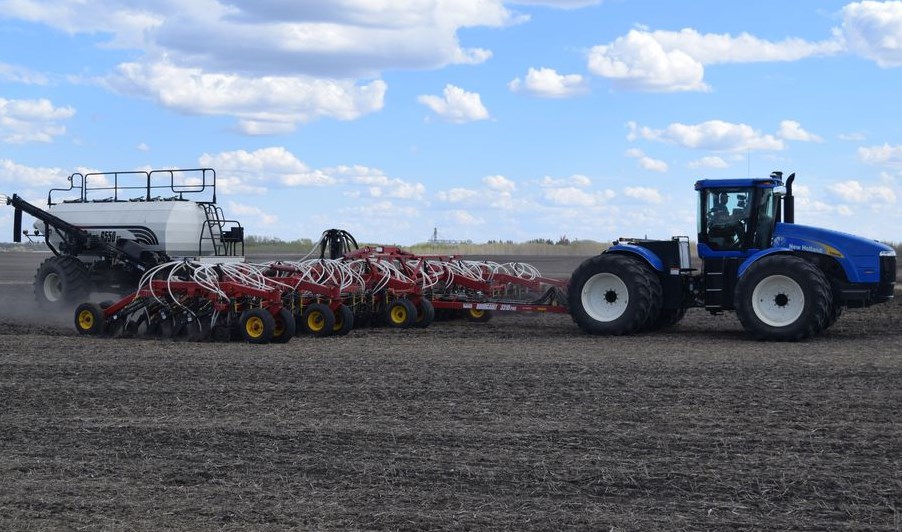REGINA — Seeding progress greatly advanced over the past week despite rain delays throughout the province. Seeding progress is now 94 per cent complete, up from 77 per cent last week. This falls behind both the five-year and ten-year average of 97 per cent.
The southeast and southwest are the furthest advanced at 96 per cent complete. The northwest is 93 per cent complete, followed closely by the east-central, west-central and northeast regions which all report 92 per cent complete.
Provincially, seeding is nearly complete for field peas, lentils, spring wheat and durum. Mustard, triticale and perennial forage are the furthest behind in seeding progress.
Rainfall was variable throughout the province with a few areas reporting heavy rainfall. The highest rainfall was reported in the Porcupine Plain area at 83 mm followed by the Foam Lake area at 73 mm. The Ituna and Lipton areas both received 52 mm.
Topsoil moisture continued to increase this week. Cropland topsoil moisture is rated as four per cent surplus, 91 per cent adequate and four per cent short. Hayland topsoil moisture is reported at two per cent surplus, 88 per cent adequate and nine per cent short. Pasture topsoil moisture is three per cent surplus, 87 per cent adequate and ten per cent short.
Producers are looking forward to warmer weather to assist crop development. Varying stages of development are reported given the cooler temperatures and delays in seeding progress.
Forty-eight per cent of winter cereals are in the tillering stage, 25 per cent at stem elongation, 20 per cent at flag leaf and seven per cent heading.
Twenty-six per cent of spring cereals are at the pre-emergent stage with 57 per cent at the seedling stage and 17 per cent tillering.
Eighteen per cent of pulse crops are at the pre-emergent stage with 68 per cent at the seedling stage and 14 per cent reported at the vegetative stage of development.
Forty-three per cent of canola and mustard are at the pre-emergent stage, with 54 per cent at the seedling stage and three per cent at the rosette stage.
Forty-seven per cent of flax is at the pre-emergent stage with 51 per cent at the seedling stage and two per cent starting stem elongation.
There have been various causes of crop damage over the past week. Wind, frost and hail were reported in various locations across the province, with minor crop damage overall. In some regions, producers reported localized heavy rain caused crops to drown out in lower areas within the field. Minor crop damage from flea beetle and cutworm pressure was reported with some producers taking control measures. Producers continue to monitor grasshopper and gopher populations across the province.
Producers have been busy with seeding and spraying when the weather permits, along with rock picking, land rolling, moving cattle out to pasture and branding. Producers are reminded to keep safety top of mind while working.
— Submitted by Saskatchewan Agriculture



